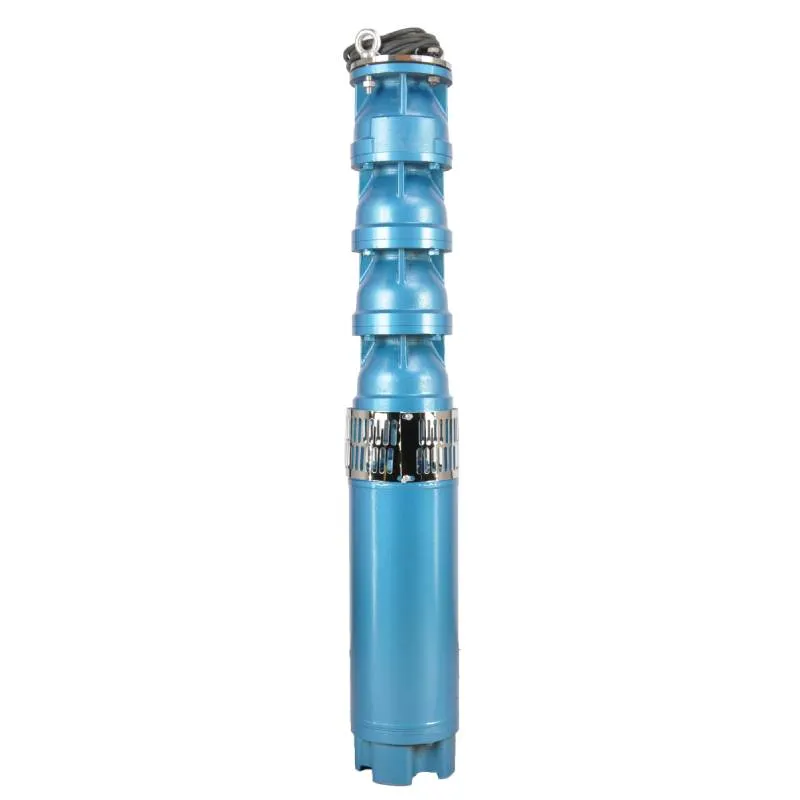Nov . 04, 2024 17:23 Back to list
submersible water pump problems and solutions
Common Submersible Water Pump Problems and Solutions
Submersible water pumps are essential for a variety of applications, ranging from groundwater extraction to drainage of flooded areas. However, like any mechanical device, they are not immune to issues. Understanding common problems and their solutions can significantly enhance the longevity and efficiency of a submersible pump.
1. Overheating
One of the most frequent problems encountered with submersible pumps is overheating. This issue usually arises due to prolonged operation without adequate cooling. Overheating can cause the motor to burn out, leading to costly repairs or replacements.
Solution To prevent overheating, ensure that the pump is submersed in water at all times during operation. Additionally, consider using a pump with a built-in thermal overload protection system. If overheating persists, check for any clogs or blockages that could impede water flow, and ensure the pump’s specifications match the demands of your application.
2. Poor Performance
If a submersible pump is not producing water as expected, it may be operating inefficiently
. This can result from various factors, including a clogged pump, incorrect installation, or damage to the impeller.Solution Start by inspecting the pump for blockages or debris. If clogs are found, clean the pump thoroughly. Assess the installation setup to ensure that it is in line with the manufacturer's guidelines. If the impeller is damaged, it may need to be replaced to restore proper function.
3. Strange Noises
Unusual sounds, such as grinding or rattling, can signal internal issues within the pump. These noises may indicate loose components or wear and tear on the bearings.
submersible water pump problems and solutions

Solution If you hear strange noises, stop the pump immediately to prevent further damage. Inspect the unit for any loose screws or parts and tighten them if necessary. If the noise persists, professional servicing may be required to repair or replace damaged components.
4. Electrical Issues
Electrical problems can manifest in various ways, including failure to start or intermittent operation. These issues might stem from a faulty power supply, damaged wiring, or a malfunctioning switch.
Solution Begin troubleshooting by checking the power source and ensuring the pump is properly connected. Inspect all wiring for signs of wear or damage, and replace any defective parts. If electrical issues continue, consulting a professional electrician or pump technician may be necessary.
5. Leakage
Leakage around the pump can also be a concerning sign, often indicating a failure in the seals or housing. This can reduce efficiency and lead to further problems over time.
Solution Identify the source of the leakage and determine whether the seals need replacement or if the housing itself is damaged. Regular maintenance, including seal inspection, can help prevent leakage before it becomes a significant issue.
Conclusion
Submersible water pumps are invaluable tools in many settings. However, like all machinery, they require proper care and attention. By understanding the common problems and implementing the recommended solutions, users can ensure their pumps operate effectively and have a longer lifespan. Regular maintenance checks and prompt attention to any issues will help maximize the performance of submersible pumps, ultimately saving time and money in the long run.
-
Submersible Water Pump: The Efficient 'Power Pioneer' of the Underwater World
NewsJul.01,2025
-
Submersible Pond Pump: The Hidden Guardian of Water Landscape Ecology
NewsJul.01,2025
-
Stainless Well Pump: A Reliable and Durable Pumping Main Force
NewsJul.01,2025
-
Stainless Steel Submersible Pump: An Efficient and Versatile Tool for Underwater Operations
NewsJul.01,2025
-
Deep Well Submersible Pump: An Efficient 'Sucker' of Groundwater Sources
NewsJul.01,2025
-
Deep Water Well Pump: An Efficient 'Sucker' of Groundwater Sources
NewsJul.01,2025
-
 Submersible Water Pump: The Efficient 'Power Pioneer' of the Underwater WorldIn the field of hydraulic equipment, the Submersible Water Pump has become the core equipment for underwater operations and water resource transportation due to its unique design and excellent performance.Detail
Submersible Water Pump: The Efficient 'Power Pioneer' of the Underwater WorldIn the field of hydraulic equipment, the Submersible Water Pump has become the core equipment for underwater operations and water resource transportation due to its unique design and excellent performance.Detail -
 Submersible Pond Pump: The Hidden Guardian of Water Landscape EcologyIn courtyard landscapes, ecological ponds, and even small-scale water conservancy projects, there is a silent yet indispensable equipment - the Submersible Pond Pump.Detail
Submersible Pond Pump: The Hidden Guardian of Water Landscape EcologyIn courtyard landscapes, ecological ponds, and even small-scale water conservancy projects, there is a silent yet indispensable equipment - the Submersible Pond Pump.Detail -
 Stainless Well Pump: A Reliable and Durable Pumping Main ForceIn the field of water resource transportation, Stainless Well Pump has become the core equipment for various pumping scenarios with its excellent performance and reliable quality.Detail
Stainless Well Pump: A Reliable and Durable Pumping Main ForceIn the field of water resource transportation, Stainless Well Pump has become the core equipment for various pumping scenarios with its excellent performance and reliable quality.Detail
